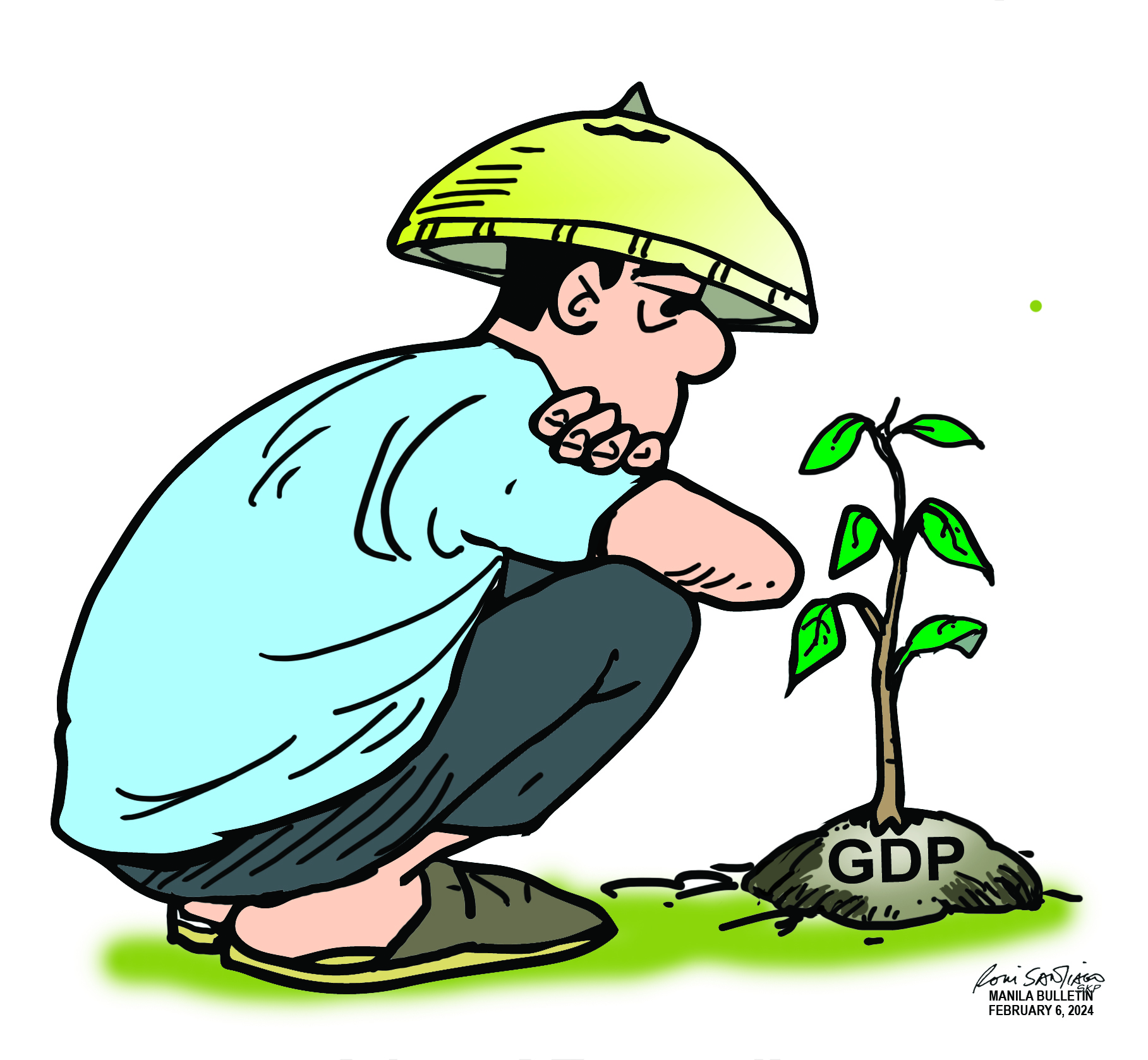
It is important to understand the factors that account for the slower growth of the country’s gross domestic product (GDP) in 2023 at 5.6 percent compared to 7.6 percent in 2022, and below the six to seven percent level projected previously by the government’s economic management team. According to National Economic and Development Authority (NEDA) Secretary Arsenio M. Balisacan, elevated inflation and high interest rates, along with lower government spending, were the significant factors underpinning this outcome.
Full-year 2023 inflation rate was at six percent, way above the Bangko Sentral ng Pilipinas’ two to four percent range forecast. Growth of government spending flattened at 0.4 percent, a marked downtrend from the 4.9 percent growth registered in 2022 due to “fiscal consolidation,” a process impelled by the need to lower the fiscal deficit and government borrowing levels, while still ensuring that government is able to provide adequate social protection for those at the bottom rungs of the economic ladder.
According to a Bloomberg news headline on Jan. 31, 2024, the “Philippine economy posts Southeast Asia’s quickest expansion.” The report further described the 5.6 percent growth as “overtaking Vietnam’s performance.” This validates Secretary Balisacan’s observation that the country is “in the position of being one of the best-performing economies in Asia.”
In contrast to the government's flat performance, the other key components of GDP growth, consumption and investment performed better although still not as well as the 2022 performance. Household final consumption in 2023 expanded by 5.6 percent, way behind the 8.3 percent level attained in 2022. Note that private consumption accounts for approximately 75 percent of the economy.
The primary drivers of consumption growth, based on fourth-quarter 2023 figures, were hotels and restaurants, 16.2 percent; transport, 12.2 percent; and recreation, 7.3 percent. In contrast, clothing and footwear consumption was 1.4 percent lower. These figures suggest higher mobility and expanded socialization following the crippling effects of the coronavirus pandemic in the previous three years.
Hopefully, the escalation in investment expansion in the fourth quarter of 2023 as reflected in the 10.2 percent growth in fixed capital formation and 14.6 percent in durable equipment expansion are indicators of an upturn through 2024.
Inflation severely affects the poor as it further constricts their limited purchasing power and ability to “keep body and soul together.” As they are hard-pressed making ends meet, breadwinners are prioritizing food and shelter over clothing and other personal needs. The snowballing multisectoral coalition to fight prenatal and early child malnutrition reflects the urgency of this concern.
On the macroeconomic level, the NEDA vows to “relentlessly manage” inflation by promoting more robust competition, strengthening agricultural value chains and working with ASEAN allies to enable robust regional trade.
What matters is that the country attains sustainable growth that enables all sectors of society to equitably enjoy the fruits of progress, as embodied in the long-term goal of AmBisyon 2040: “Our family lives together in a place of our own, and we have the freedom to go where we desire, protected and enabled by a clean, efficient, and fair government.”